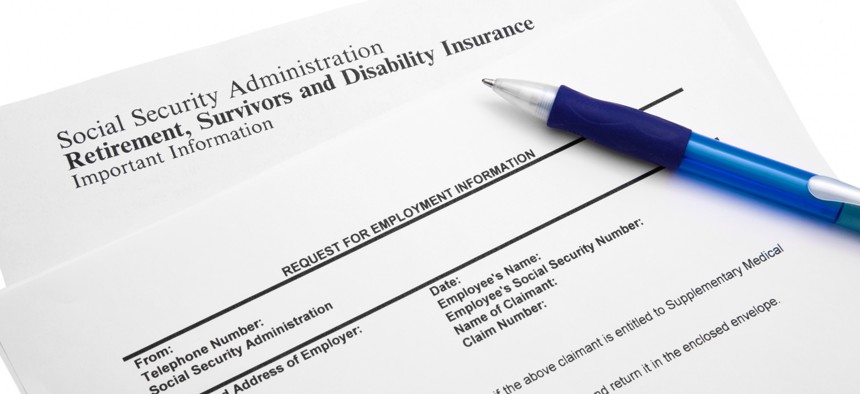Caller ID woes contributed to SSA disability backlog

A Social Security Administration OIG report found that pandemic telework challenges and workforce attrition contributed to a backlog of disability claims. Johnrob / Getty Images
Disability determinations at the Social Security Administration slowed during the worst days of the pandemic, and a hitch in a mobile device service played a part.
In March 2020, the Social Security Administration division that handles disability claims went on an emergency telework system — like much of the rest of the federal government during the early days of the coronavirus pandemic. But the Disability Determination Services division lacked much experience with telework, and tech hiccups and high employee attrition rates continue to reverberate in the high-levels of current backlogs.
DDS, which makes initial medical decisions about disability claims, saw initial medical consults drop by 22.8% nationwide, with some offices experiencing drops of more than 30% from just before the pandemic to March 2022, according to an oversight report from SSA's internal watchdog released on June 22.
DDS personnel were also put on maximum telework, but the agency didn't hit the ground running when it came to equipment and remote work environments. According to the report, only 15 of 52 DDS offices supported any telework at all before the pandemic. At first, DDS workers brought their desktop computers home for telework, before the agency began deployment of laptops and basic mobile phones to communicate with claimants.
The initial order of mobile phones did not include caller ID capability and call recipients reported seeing "unknown" and "spam" alerts when calls came in from DDS workers. "As a result, many claimants were wary the calls coming from the DDS were scams," the report states.
In addition to the caller ID problems, the interim phone system didn't support previously existing features like allowing claimants to request a callback or provide wait times to callers.
DDS expanded the use of telehealth in consultative examinations, but only for mental health and speech and language disability consults. More than 70% of DDS personnel who responded to a survey from SSA's Office of Inspector General about the pandemic response said that the telehealth appointment option was helpful for getting claimants through the initial disability determination during the pandemic.
However, 75% of DDS personnel said they would not want to incorporate telehealth for other kinds of disability determinations beyond those currently allowed by SSA.
Agency leaders say the pandemic is still taking a toll.
DDS lost more than 4,000 employees during the pandemic. While overall DDS has hired more than 4,300 employees since, some key regional offices are still operating with fewer workers. In addition, SSA continued to try to advance its transition from a legacy system for disability cases to a new modernized system during the pandemic. In interviews with OIG personnel, some DDS workers said the move created an additional burden on employees and factored into the high attrition rate at that time.
"After the disruptions of the pandemic, we continue to face significant challenges in restoring service delivery to the standards the public expects and deserves," Chad M. Poist, SSA's deputy commissioner for budget, finance and management, told a House committee on June 21.
Poist attributed the continuing backlog to workforce problems. He told lawmakers last week that "after years of tight budgets, in fiscal year 2022 we dropped to our lowest staffing level in 25 years."
The agency is seeking $15.5 billion in the fiscal year 2024 budget to hire more staff and modernize technology to reduce backlogs and wait times faced by claimants.
NEXT STORY: Is government culture stifling CX innovation?



